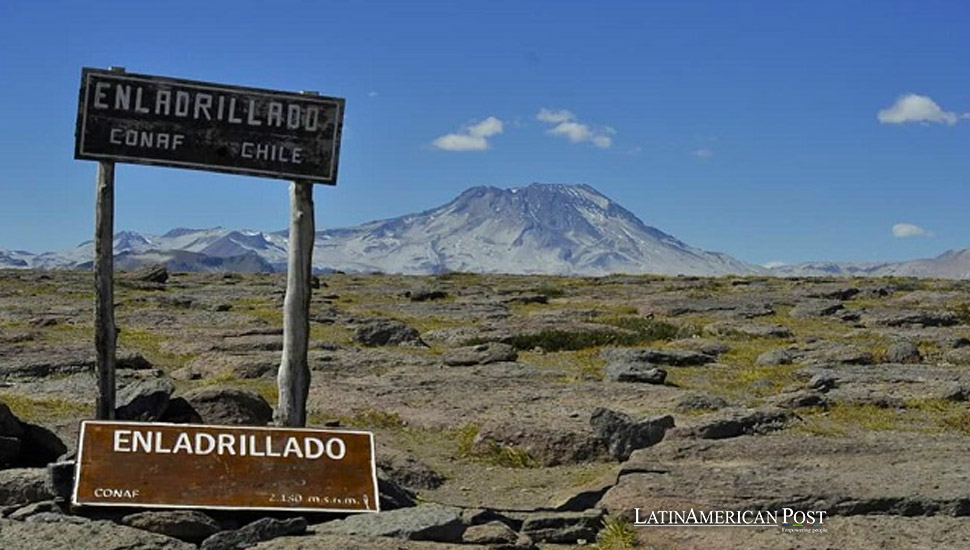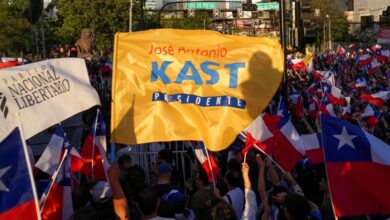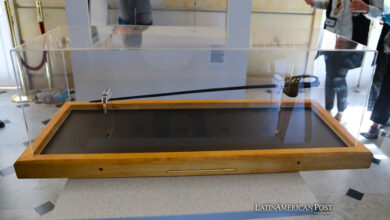Chile’s San Clemente: The Unofficial UFO Capital of the World

According to the recently published Atlas of Paranormal Places by Evelyn Hollow (Ivy Press, 2024), the small Chilean commune of San Clemente in the Maule region is considered the unofficial UFO capital of the world. This Andean city has captivated global attention for its mysterious and frequent UFO sightings, making it a hotspot for those intrigued by the paranormal.
San Clemente, a quaint city nestled in the Andean mountains of Chile’s Maule Region, has earned an extraordinary reputation as the unofficial UFO capital of the world. As highlighted in Evelyn Hollow’s recently published Atlas of Paranormal Places (Ivy Press, 2024), this intriguing designation brings global attention to a region otherwise known for its natural beauty, including wildlife preserves, waterfalls, and lagoons. With a population of about 40,000 living in rural areas, San Clemente’s allure extends far beyond its scenic landscapes. The area has become synonymous with unexplained aerial phenomena that baffle locals and visitors alike.
The author states that San Clemente’s UFO reputation is traced back to the mid-1990s when local newspapers began reporting mysterious sightings. These accounts went beyond typical UFO reports; they included descriptions of glowing spheres that mysteriously vanished into the forests and bodies of water surrounding the town. The frequency of these reports has since increased, with an estimated average of one sighting per week. This surge in unexplained activity prompted the Chilean government to recognize the region’s unique status by establishing a 19-mile-long ‘UFO trail’ in 2008. This trail guides visitors through the Andean mountains and forests, including key locations such as Colbún Lake, a site believed to attract UFOs due to its high mineral content.
According to Hollow’s Atlas of Paranormal Places, lakes like Colbún frequently appear on maps of UFO sightings. Theories abound as to why these bodies of water might attract extraterrestrial visitors. Some researchers suggest that if life forms from other planets were to visit Earth, they might be drawn to our planet’s life sources, such as large bodies of water, to collect samples or to study their properties. Alternatively, these areas could offer essential minerals or elements that extraterrestrial visitors require. Hollow’s book highlights how these natural features can create a perfect environment for supernatural events, as water bodies often alter light sources, create reflections, and distort sound, all of which can confuse our senses and lead to strange experiences.
El Enladrillado: A Mysterious Megalith and UFO Hotspot
One of the most fascinating locations along San Clemente’s UFO trail is El Enladrillado, a mysterious elevated site at 7,217 feet above sea level. El Enladrillado, as described in Hollow’s Atlas of Paranormal Places, is one of the world’s top fifty most giant stone megaliths and a significant point of interest for UFO enthusiasts. This site, which requires a four-hour horseback ride to reach, consists of 233 massive rectangular stones, some as large as 16 feet wide and 30 feet long, arranged in an amphitheater-like formation. The geometric precision of the stones has drawn comparisons to other enigmatic sites, such as the Giant’s Causeway in Ireland.
The origins of El Enladrillado are shrouded in mystery. While many geologists believe it to be a natural formation, the stones’ sheer scale and deliberate arrangement have led others to speculate that an ancient civilization may have constructed it. UFO enthusiasts, inspired by Hollow’s research, even suggest that the site could have served as a landing pad for extraterrestrial visitors, given the high number of sightings reported in the area. The controversy surrounding El Enladrillado’s origins only adds to its allure, making it a central location in the ongoing study of unexplained aerial phenomena.
Interestingly, the theories about ancient advanced civilizations in the region extend beyond El Enladrillado. Hollow’s Atlas of Paranormal Places also mentions the work of Chilean professor Robert Rengifo, who, in the early 1900s, posited that humanity might have originated from Antarctica rather than Africa. He suggested that a catastrophic pole shift destroyed the civilization in Antarctica, forcing its inhabitants to migrate to other parts of the world, including the Americas. Rengifo even speculated that the lost city of Atlantis could have been located in Antarctica. While controversial, this theory offers an intriguing backdrop for Chile’s mysterious megaliths and UFO sightings, adding another layer of complexity to the region’s paranormal history.
Local Testimonies of the Unexplained
The book highlights that San Clemente is not only famous for its UFO sightings but also for the bizarre encounters reported by its residents. These accounts add a personal dimension to the region’s supernatural allure, illustrating how deeply ingrained these phenomena are in the local culture. Muleteers, who frequently traverse the mountainous terrain, are among those who have had some of the most compelling experiences. One muleteer, Eladio Gajardo, recounted seeing a bright light in a whirlwind motion among the mountains—an impossible maneuver for any known aircraft. This light continued its strange behavior for about 20 minutes, leaving Gajardo and others who witnessed it in awe.
Gajardo’s brother had an equally perplexing experience, although his involved a being rather than a craft. He claimed to have seen a small, monkey-like figure walking mid-air above the treetops. The creature appeared to be levitating, moving its shoulders from side to side as it floated. Ufologists who study these reports speculated that the being was a ‘humanoid’—a non-human entity with a humanoid shape. As documented in Hollow’s book, such encounters contribute to the local lore and have made San Clemente a focal point for those studying extraterrestrial life.
Another significant case detailed by Hollow involved a mountaineer named Claudio Pastén, who reported seeing two large lights hovering over the basin of El Morado, a lagoon in the Cajón del Maipo region. As soon as he tried to draw the attention of his companions, the lights changed direction and dipped into the water, illuminating the entire lagoon. A craft emerged from the water, leaving two tall beings on the shore. This incident, which occurred in 1997, is one of the most detailed and eerie accounts of UFO activity in the area, further cementing San Clemente’s status as a paranormal hotspot.
Such reports are not limited to isolated incidents. In 2010, during a massive earthquake in Chile, a group of schoolteachers camping at Maule Lagoon reported seeing vehicles emerge from the water and ascend into the sky. The quake, which measured 8.8 on the Richter Scale, caused widespread devastation, but for these teachers, the sight of unidentified craft during the chaos was a profoundly unsettling experience. As highlighted in Hollow’s research, these testimonies suggest that the region’s UFO activity is not only persistent but also deeply rooted in the local culture, providing fertile ground for academic study and popular fascination.
Theories and the Global UFO Phenomenon
San Clemente’s reputation as a UFO hotspot has led to various theories about why certain areas worldwide, including this small Chilean commune, seem to attract unexplained phenomena. Hollow’s Atlas of Paranormal Places offers insights into the global nature of UFO sightings, suggesting that San Clemente marks the end of the Inca Road, which connects to Nazca in Peru—another region rich in UFO sightings and ancient mysteries. The idea that UFO hotspots are linked to one another geographically supports the notion that extraterrestrial visitors may be interested in specific areas for reasons we do not yet fully understand.
Common factors among these hotspots include large bodies of water with high mineral content, volcanic and tectonic activity, and ancient monolithic structures. All these elements converge in San Clemente, making it a prime location for those interested in studying UFOs and paranormal activity. The region’s unique combination of natural and supernatural features has drawn researchers, tourists, and government attention, as documented extensively in Hollow’s book.
The Chilean government’s establishment of the CEFAA (Committee for the Study of Anomalous Aerial Phenomena) in 1997 reflects the seriousness of these phenomena in the country. The CEFAA’s mandate is to investigate and analyze UFO sightings using scientific methods, providing reports that aim to separate myth from reality. However, the relationship between the CEFAA and ufologists remains complex, as many believe that governments worldwide have long concealed the truth about UFOs from the public.
Recent developments, such as the declassification of UFO footage by the U.S. government, have reignited global interest in the subject. Similar revelations have occurred in Chile, including a Roswell-like incident in 1998 when a strange craft reportedly crashed into Las Mollacas Hill. Despite official investigations and even NASA’s involvement, the details of the case remain shrouded in mystery, fueling speculation and intrigue.
Also read: Tsimane of Bolivia Share Secrets of Health in Amazon
For the residents of San Clemente, the influx of UFO enthusiasts and researchers has brought both attention and skepticism. Some locals view the phenomenon as a tourism-driven narrative, while others have their own experiences to share. The ongoing sightings and the government’s involvement in monitoring the region suggest that the UFO activity in San Clemente is more than just a local legend—it is a global enigma that continues to challenge our understanding of the universe.





